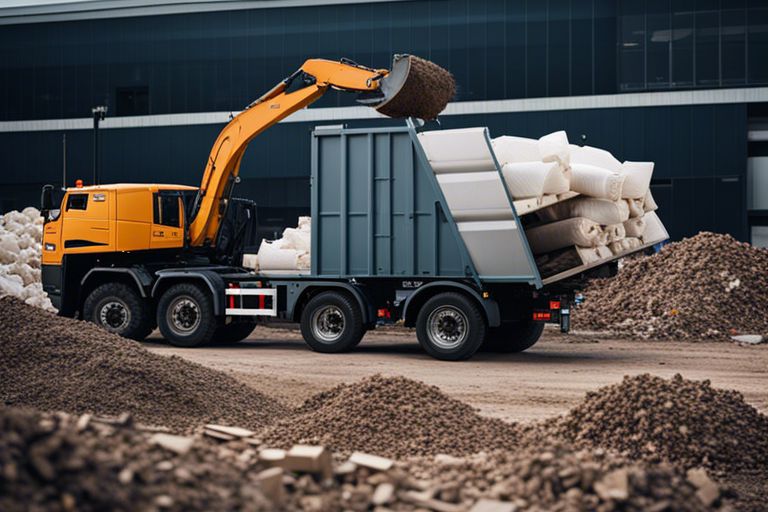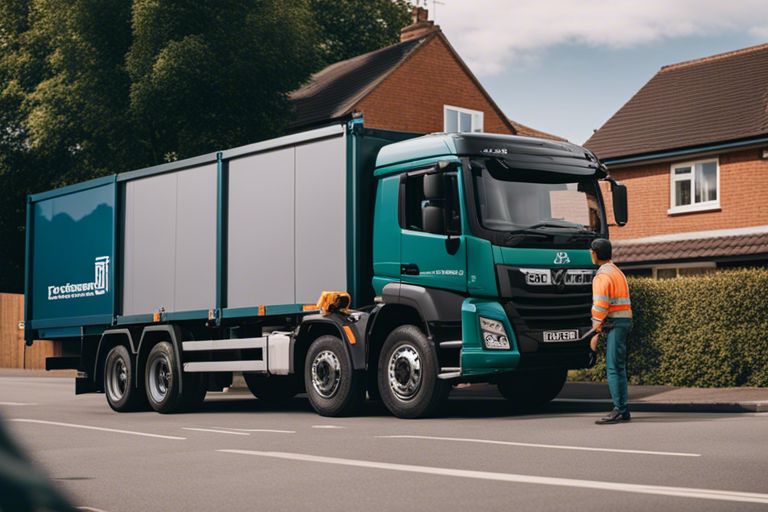Obtaining approval and ensuring safety are vital when it comes to demolishing a structure. Whether you are a professional contractor or a private individual, understanding the legal requirements and best practices for a safe demolition process is crucial. In this comprehensive guide, we will cover everything you need to know about demolishing a structure, from the initial planning stages to the final clean-up. For further in-depth information, you can also refer to A Comprehensive Guide To Demolishing A Building.
Key Takeaways:
- Safety first: Prioritise the safety of all individuals involved in the demolition process, as well as nearby residents and the environment.
- Legal compliance: Ensure that all necessary permits and regulations are fully adhered to, to avoid any legal issues or penalties.
- Professional expertise: Engage the services of qualified and experienced demolition professionals to oversee the process and ensure a successful outcome.

Types of Demolition
There are several different methods of demolition that can be used to bring down a structure. Each method has its own unique set of benefits and challenges, so it’s important to choose the right approach for the job. Here, we’ll break down the most common types of demolition and discuss their respective advantages and drawbacks.
- Mechanical Demolition
- Implosion
- Deconstruction
- Selective Demolition
Mechanical Demolition
Mechanical demolition involves the use of heavy machinery and equipment to tear down a building or structure. This method is often chosen for its efficiency and precision, allowing for controlled dismantling of the structure. However, it can be a noisy and disruptive process, and safety precautions must be strictly adhered to.
Implosion
Implosion is a dramatic and efficient method of demolition that involves strategically placing explosives within the structure to bring it down in a controlled manner. This approach can be highly effective for large, urban buildings, but it requires careful planning and expertise to ensure safety and avoid damage to surrounding properties. Implosion should only be carried out by experienced and licensed professionals.
Implosion is not recommended for use in densely populated areas or near historic or structurally sensitive buildings. Any miscalculation could have catastrophic consequences.
Deconstruction
Deconstruction is a careful and methodical approach to demolition that focuses on salvaging and reusing materials from the structure. This environmentally friendly method can be more time-consuming and labour-intensive, but it can also be a cost-effective and sustainable option for certain projects. Deconstruction requires meticulous planning and skilled workers to ensure safety and maximum material recovery.
Deconstruction is a preferred method for preserving valuable architectural elements and minimising waste in construction projects.
Selective Demolition
Selective Demolition involves the careful dismantling of specific elements within a structure, rather than bringing down the entire building. This method is often chosen when renovating or repurposing a building, as it allows for the preservation of key features while removing unwanted components. However, it requires a high level of precision and expertise to avoid causing damage to the integrity of the remaining structure.
Selective Demolition can be a valuable tool for restoration and adaptive reuse projects, allowing for the retention of historic and architectural elements.
Pre-Demolition Considerations
Before starting the demolition process, there are several important factors to consider. It is crucial to thoroughly assess the structure and surrounding environment to determine the safest and most effective demolition method. Additionally, obtaining the necessary permits and complying with all legal regulations is essential to ensure a smooth and lawful demolition process.
Factors Influencing Demolition Methods
When planning a demolition, several key factors must be considered to determine the most suitable method. Structural integrity, environmental impact, and site accessibility play a significant role in deciding the appropriate approach. Moreover, cost implications and time constraints also influence the choice of demolition method. After evaluating these factors, the most suitable demolition method can be chosen to ensure a safe and efficient process.
Pros and Cons of Each Demolition Type
It is important to weigh the advantages and disadvantages of each demolition type before making a decision. Different methods such as implosion, deconstruction, and mechanical demolition all have their own set of pros and cons. These factors should be carefully considered to determine the most appropriate approach for the specific project. Importantly, the pros and cons information should be broken down into a table with two columns and up to 10 rows, to provide a clear comparison and aid the decision-making process.
Furthermore, assessing the structure for demolition also involves considering the health and safety implications, waste management, and salvage potential of the materials. It is imperative to conduct a thorough assessment to ensure the safe and efficient demolition of the structure.
Assessing Your Structure for Demolition
Prior to initiating the demolition, a comprehensive assessment of the structure is necessary to identify any potential hazards and determine the most appropriate demolition method. Engaging qualified professionals to conduct a thorough structural assessment is essential to ensure the safety and success of the demolition project. Additionally, an assessment will also provide valuable insights into the potential salvage and recycling opportunities, contributing to a more sustainable and environmentally conscious demolition process.

Preparing for Demolition: A Step-by-Step Guide
Before embarking on a demolition project, it is crucial to meticulously prepare for the process. This involves acquiring necessary permits, developing a comprehensive safety plan, and ensuring proper site preparation and hazard mitigation. Additionally, selecting the right equipment and crew is paramount to the success of the project. Below is a step-by-step guide outlining the essential considerations for preparing for demolition.
Acquiring Necessary Permits
Prior to commencing any demolition work, it is imperative to obtain the required permits from the local authorities. This may include planning permission, environmental permits, and building regulations approval. It is essential to adhere to all legal requirements to guarantee that the demolition is conducted in a safe and legally compliant manner.
Developing a Safety Plan
One of the most crucial aspects of preparing for demolition is the development of a comprehensive safety plan. This involves conducting a thorough assessment of potential hazards, implementing appropriate safety measures, and providing adequate training for all personnel involved. The safety plan should emphasise the importance of maintaining a safe working environment and outline emergency procedures in the event of an accident.
Furthermore, it is imperative to engage the services of qualified professionals, such as structural engineers and safety officers, to assist in developing a robust safety plan. The plan should be regularly reviewed and updated to ensure it remains effective throughout the duration of the demolition project.
Site Preparation and Hazard Mitigation
Prior to commencing any demolition work, it is essential to thoroughly prepare the site and mitigate potential hazards. This may involve removing hazardous materials, such as asbestos and lead, and securing the site to prevent unauthorised access. Additionally, it is important to conduct a thorough assessment of the site to identify any potential hazards, such as unstable structures or underground utilities, and implement measures to mitigate these risks.
Effective site preparation and hazard mitigation are critical in ensuring the safety of all personnel involved in the demolition project, as well as minimising the risk of damage to adjacent properties and the surrounding environment.
Selecting the Right Equipment and Crew
Choosing the appropriate equipment and assembling a skilled crew are fundamental to the success of any demolition project. It is essential to select equipment that is specifically suited to the type of structure being demolished and ensure that it is well-maintained and operated by trained professionals. Similarly, assembling a competent and experienced crew is crucial in executing the demolition safely and efficiently.
By selecting the right equipment and crew, you can significantly mitigate the risks associated with demolition and positively contribute to the success of the project.
Tips for a Successful Demolition
When it comes to demolishing a structure, it is crucial to follow the right tips to ensure a smooth and successful process. Here are some key tips to consider:
- Start by obtaining the necessary demolition permits and approvals from local authorities.
- Survey the site thoroughly to identify any potential hazards or dangers that need to be addressed.
- Invest in high-quality demolition equipment and tools to facilitate the process.
- Prioritize safety measures for both workers and the surrounding environment.
This guide on ‘How to Demolish a House Yourself – Demolition’ provides detailed insights into the best practices for a successful demolition.
Ensuring Compliance with Regulations
Before commencing any demolition work, it is essential to acquaint yourself with the local regulations and building codes to ensure full compliance. Obtaining the required permits and adhering to safety standards is paramount to avoid any legal repercussions or fines.
Cost-Effective Strategies
Implementing cost-effective strategies can significantly impact the overall budget of the demolition project. This can include carefully planning the sequence of demolition, salvaging reusable materials, and optimising the use of labour and machinery to minimise unnecessary expenses.
By adopting innovative and efficient cost-saving measures, you can effectively manage the financial aspect of the demolition project while maintaining high standards of safety and quality.
For more information on cost-effective strategies for demolition, check out our detailed blog post on this topic.
Minimizing Environmental Impact
Minimising the environmental impact of a demolition is a crucial consideration for the responsible completion of the project. This involves methods such as recycling materials, controlling airborne pollutants, and reducing noise pollution to preserve the surroundings.
With the increasing focus on sustainability and environmental awareness, minimising the ecological footprint of a demolition project is a key responsibility that should not be overlooked.
Effective Waste Management
Implementing an effective waste management plan is essential for the clean and organised execution of a demolition. This involves segregating different types of waste materials, partnering with waste disposal facilities, and promoting the recovery and reuse of materials wherever possible.
Proper waste management not only contributes to a safer and cleaner work environment but also reflects a responsible approach to resource conservation and environmental protection.

The Ultimate Guide to Demolishing a Structure Safely and Legally
In conclusion, demolishing a structure requires careful planning, adherence to safety regulations, and compliance with legal requirements. This ultimate guide provides comprehensive information on the steps involved in safely and legally demolishing a structure, including obtaining necessary permits, conducting thorough site assessments, and implementing proper demolition techniques. It also highlights the importance of professional expertise and the use of appropriate equipment to minimise risks and ensure a successful demolition process. By following the guidelines outlined in this comprehensive guide, individuals and organisations can effectively manage the demolition of a structure, while prioritising safety and legal compliance.
FAQ
Q: What is the first step in demolishing a structure safely and legally?
A: The first step is to obtain all necessary permits and approvals from the local council or relevant authorities.
Q: What are the key safety considerations when demolishing a structure?
A: Safety considerations include proper asbestos assessment and removal, securing the site to prevent unauthorized access, and employing trained and experienced demolition professionals.
Q: Can I demolish a structure without professional help?
A: It is highly recommended to seek professional help when demolishing a structure, as it requires specialised knowledge, equipment, and experience to ensure safety and legal compliance.
Q: What are the legal implications of improper demolition practices?
A: Improper demolition practices can result in fines, legal action, and serious safety hazards. It is essential to adhere to all relevant laws and regulations to avoid these consequences.
Q: Are there environmentally friendly demolition practices?
A: Yes, there are environmentally friendly demolition practices such as recycling materials, minimising waste, and using eco-friendly demolition techniques. It is important to consider the environmental impact when demolishing a structure.







